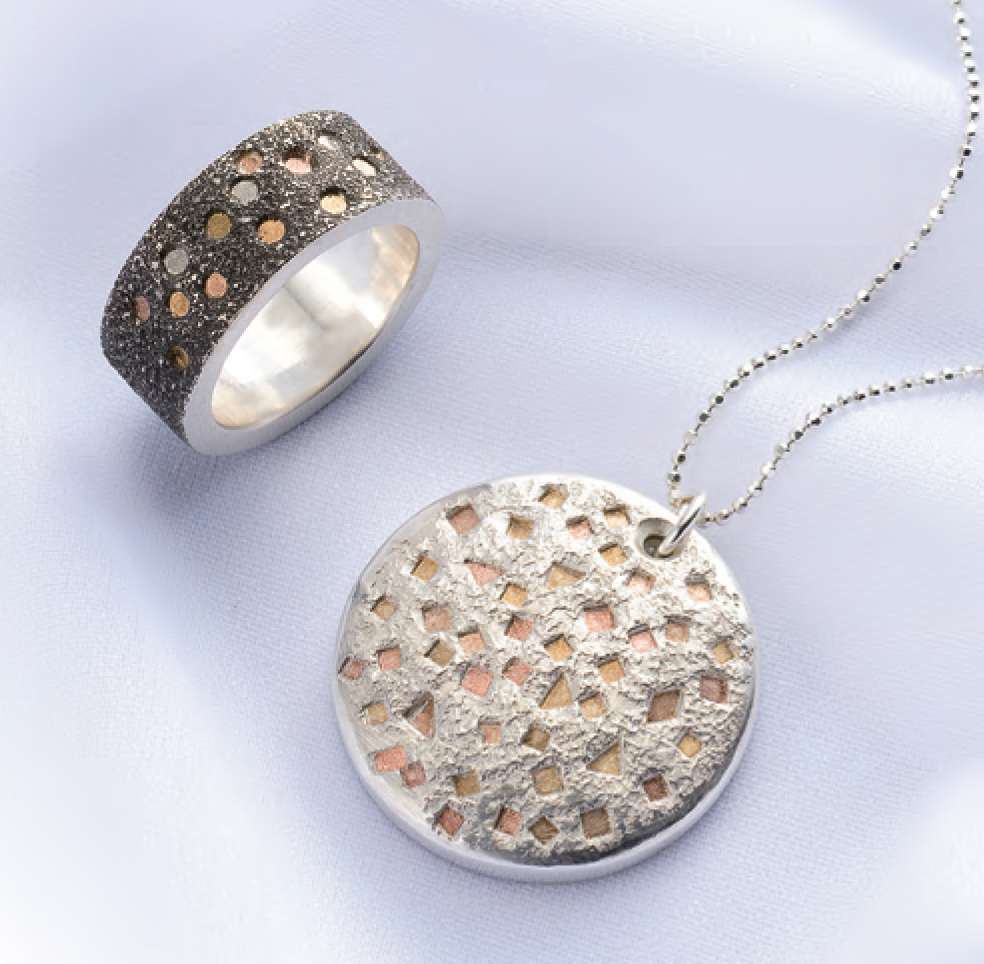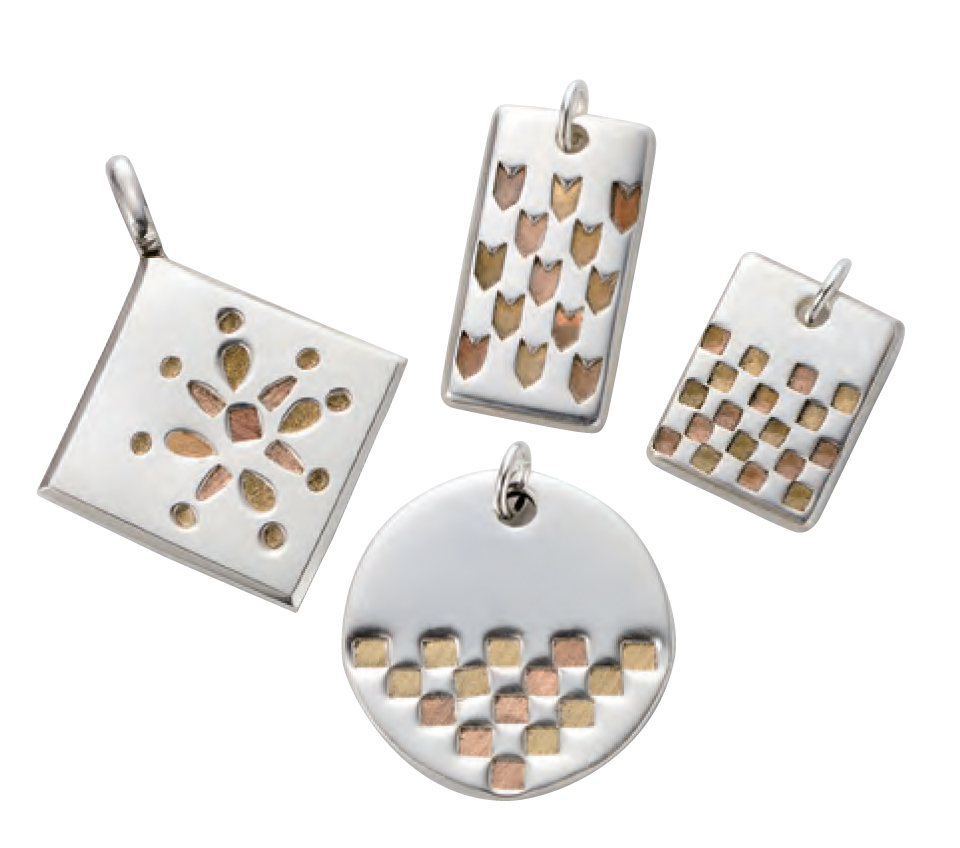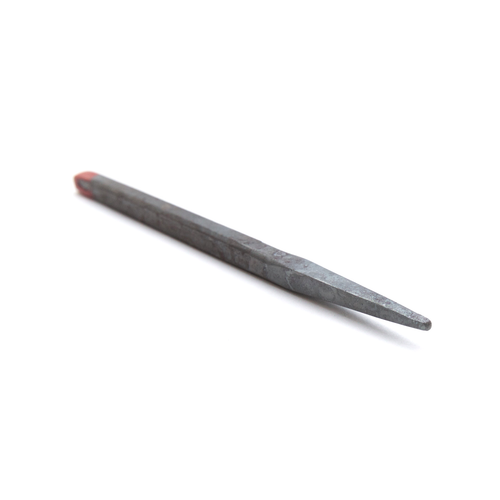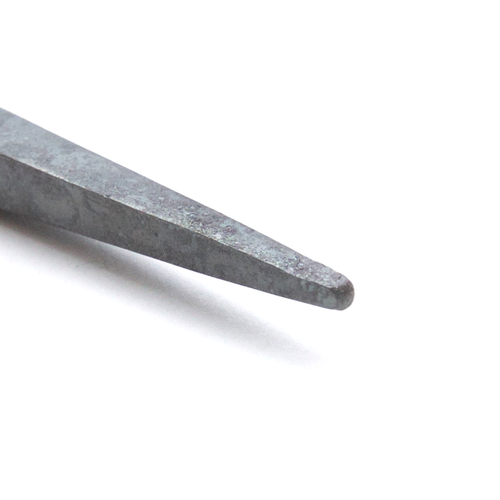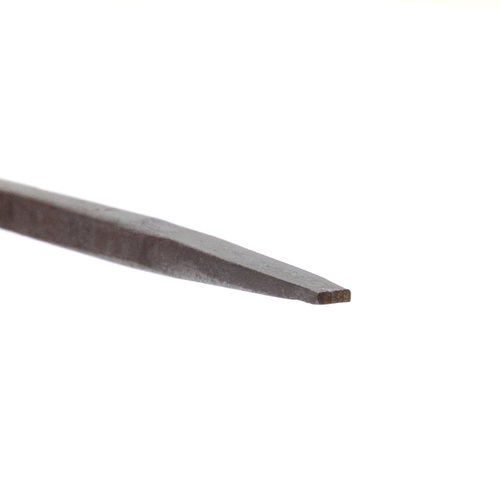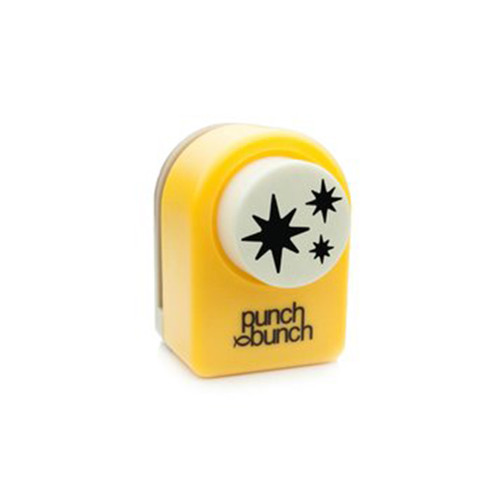Product Description
Square Chasing Punch and Inlay Chisel - Medium, this tool has multiple jewellery making uses!
Inlay chisels, also known as Japanese ‘Tagane’ chisels, are chisel blanks designed to be filed down into your own custom shape. Use inlay chisels with metal inlay mesh to embed different coloured metal accents into fired silver - without the need of firing different metals together!
This new technique developed by Aida for use with Art Clay takes advantage of the unique softness of Art Clay Silver and enables everyone to use a traditional technique that previously only skilled craftsmen could use.
These tools can also be used without mesh for traditional chasing and repoussé techniques to shape and engrave sheet silver, or stamp patterns into fired metal clay which could be contrasted with patina or Gilding Wax, etc.
How to use:
- First, use a medium fine file to make the tip of the chisel flat and level.
- Then file down to your desired shape (e.g. circle, triangle, star, teardrop, etc)
- Sand end with 600 Grit to 1200 Grit Wet & Dry paper to achieve a smooth finish (this ensures the mesh will be flattened smooth when it’s been hammered into the silver.)
- Use a hammer to strike your inlay tool over your piece at a 90° angle 2-3 times, with the mesh in between, on a steel block or small anvil. Then rotate the chisel around inside the stamped shape to cut the mesh (continue hammering while you do this if needed).
Some helpful tips:
- Fired metal clay must be no thinner than 1.5mm
- To apply the inlay technique around rings, use a ring mandrel while striking to ensure the ring doesn’t bend while hammering. Please note - we don’t recommend stamping where the ring is joined, as it can become weakened.
Hardening (this needs to be done when using the tool on harder metals):
Torch fire the tool at 800°C, this is the most common temperature to harden a chasing tool. If you are using a gas torch, the spot which you are heating must turn orange to show it is hot enough. Once the entire piece turns orange, quench it in water. *If you apply soap bar around the heating spots, you can minimize oxidation.
Tempering:
For tempering the tool we recommend the use of an electric kiln at 230°C. Unlike the hardening process where you quench it once it becomes orange, when tempering, the chisel needs to be held at 230°C for a specific time based on the volume. For reference, fire it 1 min.for 6g, 2mins for 10g, 3mins for 20g, and 4mins for 50g of steel. Quench in a water or oil after heating.
Quenching in water or oil:
In metal smithing, quenching in water is common, but you can choose whichever you like. When quenching in water, it will normally produce a harder and tougher chisel. Whereas quenching in oil will make it hard but less tough, which is often used for industrial purposes.
Shape: #4 Square - Medium
MEASUREMENTS (approx): 90mm x 5mm, Chisel Tip: 2mm x 2mm
Mesh inlay examples:
